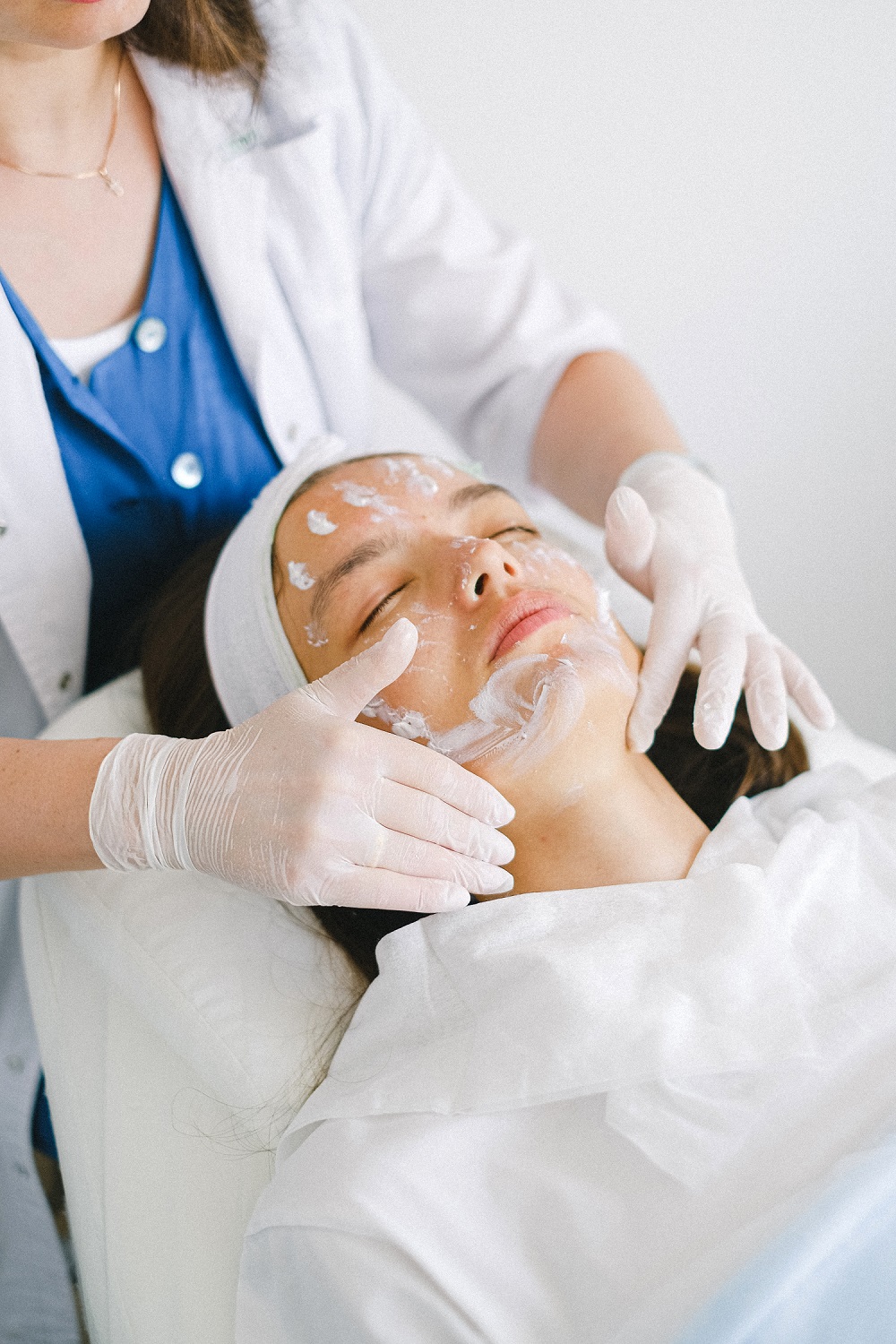Follow these 10 steps to make your skin glow, vibrant and attractive.
1. Understanding Your Skin
Learn about your skin type _ Is it dry, oily, a mix of both, or sensitive? This helps you know how to take care of it.
2. Morning Routine
In the morning, wash your face, use a toner, and put on moisturizer. Pick products that match your skin type to get ready for the day.
3. Night Routine
At night, clean off makeup, wash your face well, and put on a special treatment like serum or cream before moisturizing.
4. Sun Protection
Lorem ipsum dolor sit amet, consectetur adipiscing elit. Ut elit tellus, luctus nec ullamcorper mattis, pulvinar dapibus leo.
5. Ingredients to Know
Learn about things like hyaluronic acid, vitamin C, and niacinamide. They do good things for your skin, and you can find them in some products.
6. Avoiding Mistakes
Understand and fix common errors like using too much scrub, putting on products in the wrong order, or forgetting sunscreen even when it’s cloudy.
7. Natural and Homemade
Explore things like honey, aloe vera, and green tea. You can use them to make your own skincare things at home that are good for your skin.
8. Dealing with Skin Problems
If your skin has problems like pimples, dryness, or feeling sensitive, use special products and routines that help your skin feel better and heal.
9. Fighting Aging
Use serums, creams, and eye products that fight getting older. They help with tiny lines and keep your skin looking young.
10. Skincare for Different Ages
As you grow up, change your routine to match what your skin needs. This goes from when you’re a kid to when you’re much older.
1. Understanding Your Skin: A Comprehensive Guide
Skincare has been the buzz in the beauty industry for years. With the ever-increasing advancements in cosmetics and skin treatments, it is imperative to understand our skin – the basics. How do we recognize our skin type, and why is it so important? This guide delves into the importance of understanding your skin.
What is Our Skin?
The Body’s Largest Organ: Our skin is like a giant covering for our body. It’s the largest organ we have. Just like our heart and lungs are organs inside our body, our skin is the outer organ that covers everything.
Three Primary Layers: The skin consists of three primary layers, much like the layers of a cake. The top layer is called the ‘epidermis,’ the middle layer is known as the ‘dermis,’ and the bottom layer is called ‘subcutaneous tissue.’ Each layer performs its specific function.
Protective Barrier: One of the skin’s most important jobs is to protect our body. It acts like a shield, keeping out things that could harm us, like germs or dirt. Imagine it’s like a suit of armour that surrounds us.
Temperature Regulator: Our skin helps our body stay at the right temperature. When we get hot, like on a sunny day, it makes us sweat to cool us down. When it’s cold, it can help keep us warm by making our blood vessels get smaller.
Sensation: Our skin also helps us feel things. It’s full of tiny sensors that tell our brain what we’re touching. That’s how we know if something is soft, rough, hot, or cold when we feel it.
So, our skin is like an oversized, protective coat for our body. It keeps us safe, helps us feel things, and ensures our body stays at the right temperature. It’s an essential part of our body.
The Vital Role of Skin
Protective Functions: As mentioned earlier, one of the primary roles of the skin is protection. It acts as a barrier, keeping harmful things like bacteria and dirt out of our bodies. Just like armor, it shields us from the outside world.
Communication about Health: Our skin can be like a messenger, telling us and others about our health. When we’re feeling warm, our skin can become red or sweaty. When we’re cold, it can become pale. It can also show when we’re not feeling well; for example, our skin might look paler or different if we’re sick.
Emotions: Have you ever noticed how your skin can change when you feel different emotions? When you’re happy, you might have a glowing or radiant complexion. But when you’re embarrassed or nervous, your skin can turn red. So, your skin can show your feelings on the outside.
Indicating Health Issues: Sometimes, our skin can reveal underlying health problems. For example, if you have a rash or unusual spots on your skin, it might be a sign that something isn’t quite right with your body. So, doctors often look at our skin to help figure out what might be happening inside.
Aesthetic Appearance: Aesthetic means how something looks, and our skin plays a significant role in our appearance. It’s like the canvas for our body’s art. Healthy and well-cared-for skin can make us look and feel good. People also use creams, lotions, and makeup to keep their skin looking its best.
Our skin does much more than protect us. It tells a story about our health, emotions, and how we care for ourselves. It’s like a mirror reflecting what’s happening inside and outside us. That’s why keeping our skin healthy and happy is so important.
Skin Types and Their Characteristics
There are primarily five main skin types:
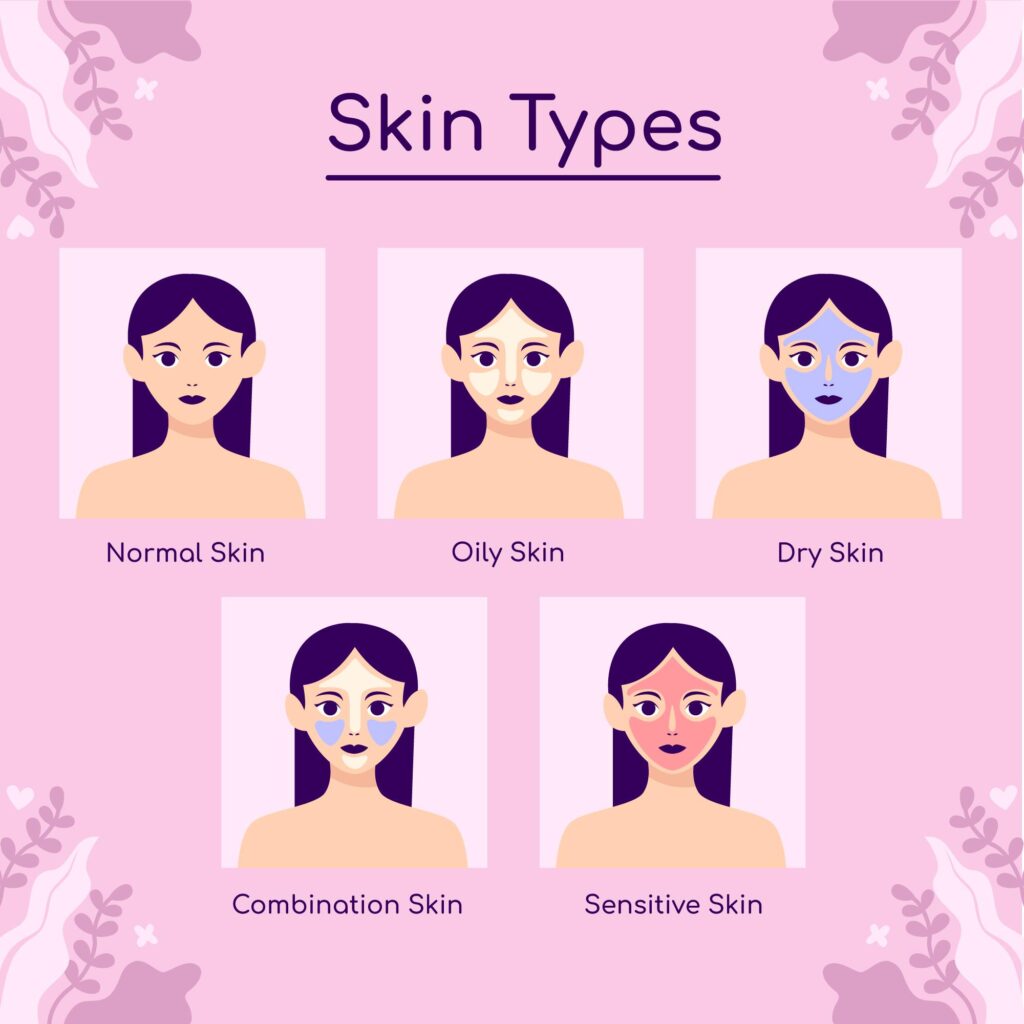
- Normal Skin
- Oily Skin
- Dry Skin
- Combination Skin and
- Sensitive Skin
How can you identify your skin?
Normal skin
Understand your natural skin with some simple methods.
Wash Your Face: Clean your face with a gentle soap-free cleanser. This cleanser is like using a special kind of soap that is not harsh.
Wait for an Hour: After washing your face, wait about an hour. During this time, your skin will go back to its usual state.

Use Tissue Paper: Take a piece of tissue paper, like the kind you use to wipe your nose.
Touch Your Face: Gently touch the tissue paper to different face parts. First, connect it to your forehead, nose, and chin (the T-zone). Then, feel it on your cheeks (that’s the C-zone).
Check the Tissue Paper: Look closely at the tissue paper after you touch it to your face.
Normal Skin: Your skin is considered normal if the tissue paper doesn’t stick to your face or change much after you touch it to both the T-zone and the cheeks. This typical condition means your skin is in good balance not too oily or dry.
If the tissue doesn’t stick to your face and doesn’t change much in the T-zone or C-zone, that’s a sign of normal or healthy skin. It means your skin is doing just fine.
Balanced Oil and Moisture Content: Normal skin is like the Goldilocks of skin types—it’s just right regarding oil and moisture. It’s not too dry, and it’s not too oily. It’s perfectly balanced, so it doesn’t feel too greasy or tight.
No Imperfections: When you look at normal skin, you won’t see many imperfections. It’s like a smooth canvas. There are usually no noticeable pimples, redness, or rough spots. It looks clear and healthy.
No Serious Sensitivities: Normal skin isn’t easily upset. It’s not overly sensitive to things like certain skincare products or changes in the weather. It doesn’t get red, itchy, or irritated easily.
Ideal Skin: People consider normal skin suitable because it’s balanced and healthy-looking. It’s like having a low-maintenance skin type. You don’t have to worry too much about it.
Balanced moisture: Normal skin doesn’t feel too oily or too dry. It maintains a comfortable level of water without feeling greasy or tight.
Smooth Texture: Normal skin has a smooth and even texture with minimal flakiness, roughness, or visible pores. The surface of the skin looks soft and supple.
No sensitivity: Normal skin is not particularly sensitive or prone to redness, irritation, or allergic reactions when exposed to skin care products or environmental factors.
Even complexion: Normal skin usually has an even complexion without redness, discoloration, or dark spots. It can have a natural glow and a healthy glow.
Minimal Blemishes: Although normal skin may experience the occasional blemish or breakout, these are usually rare and mild compared to other skin types.
Comfortable: Normal skin feels comfortable throughout the day and does not require frequent moisturizing or blotting to control excess oil.
Fine lines and wrinkles: Normal skin may have fine lines and wrinkles due to normal aging, but they are less pronounced than dry or mature skin.
Tolerance to Skincare Products: Normal skin can tolerate a wide range of products without adverse reactions. It responds well to various cleansers, moisturizers, and treatments.
Minimal pore visibility: Normal skin often has smaller, less visible pores, especially when compared to oily or combination skin.
Not overly shiny: Normal skin is not overly shiny or greasy during the day, even in the T-zone (forehead, nose, and chin).
You probably have normal skin if your skin exhibits most of these characteristics. Maintaining a good skincare routine is essential to keep your skin healthy and balanced. This routine includes daily cleansing, moisturizing, and using sunscreen to protect against UV damage. Although normal skin requires less specific attention than other skin types, dedicating just a little time to these skincare steps will result in a more attractive, bright, and vibrant complexion.
Oily Skin
Wash Method: Start by cleaning your face with a gentle soap-free soap.
Wait a Bit: After you wash your face, sit in a room without air conditioning for about an hour. This helps your skin go back to how it naturally feels.
Use Tissue Paper: Get a piece of tissue paper, like the kind you use to blow your nose.
Touch Your Face: Gently touch the tissue paper on different parts of your face. First, tap it on your forehead, nose, and chin (the T-zone). Then, tap it on your cheeks (that’s the C-zone).
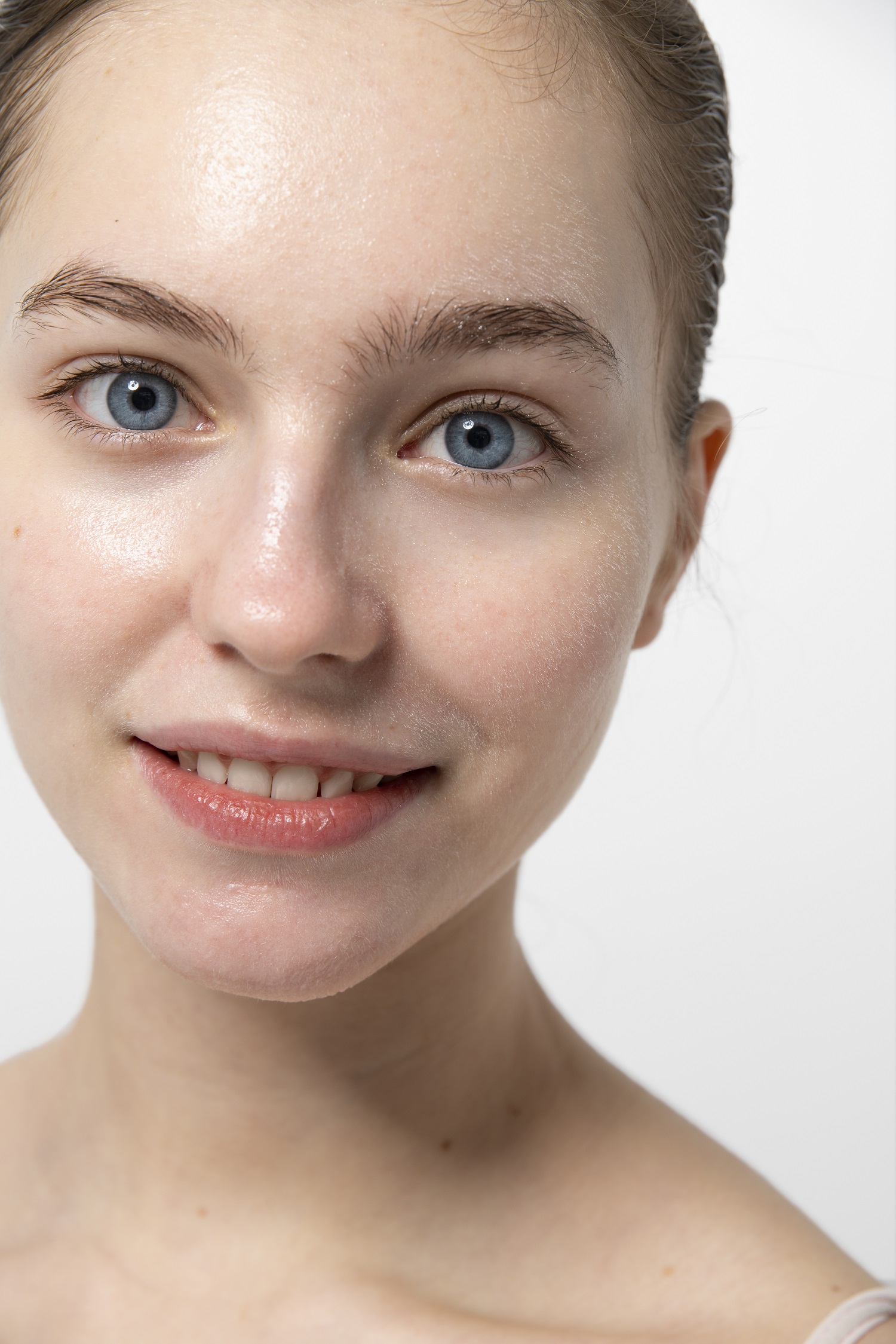
Check the Tissue Paper: Look carefully at the tissue paper after you touch it to your face.
Oily Skin: If the tissue paper sticks to your T-zone (forehead, nose, and chin) and your cheeks, and it feels greasy, you probably have oily skin.
You have oily skin if the tissue sticks and feels oily on both the T-zone and the cheeks. It’s like when your skin makes too much natural oil, and that can make it feel a bit greasy.
Excessive shine: One of the most noticeable signs of oily skin is a shiny or greasy appearance, especially in the T-zone (forehead, nose, and chin). This shine can develop throughout the day and may require frequent blotting or powdering.
Enlarged Pores: Oily skin often has large and visible pores. These larger pores result from excess oil production, which can accumulate on the skin’s surface and cause it to expand.
Acne and Blackheads: Oily skin and whiteheads, blackheads, and pimples are more prone to acne breakouts. Excess sebum can clog pores, leading to these skin problems.
Makeup Melting: If your makeup slides off or breaks off quickly, especially in the T-zone, this is a sign of oily skin. Slick skin can make putting on cosmetics testing.
Regular breakouts: Oily skin is more prone to frequent flights and may be inclined to recurring acne breakouts.
Greasy feeling: Throughout the day, you may notice that your skin feels oily or greasy to the touch, even after cleansing.
Need oil-absorbing products: People with oily skin often use oil-absorbing products such as blotting papers, oil-controlling cleansers, or mattifying moisturizers to control excess oil.
It is important to note that oily skin can be genetic or influenced by factors such as hormones, diet, and skin care habits. Proper skin care according to your skin type, including cleansing, exfoliating, and using the right moisturizer, can help manage oily skin and keep it healthy.
Dry Skin
A lack of moisture or natural oils in the skin characterizes dry skin. Recognizing dry skin involves observing certain signs and symptoms. You can identify dry skin through these signs and symptoms.
Snugness and parchedness: Dry skin frequently feels tight, particularly after purifying. It may appear or feel dehydrated and lack moisture.
Flakkiness and rough texture: Dry skin has a rough or uneven surface. You may notice flakiness, dry patches, fine lines, and wrinkles, especially around the eyes and mouth.
Itching and redness: Dry skin can itch and cause redness and irritation. Scratching dry skin can make these symptoms worse.
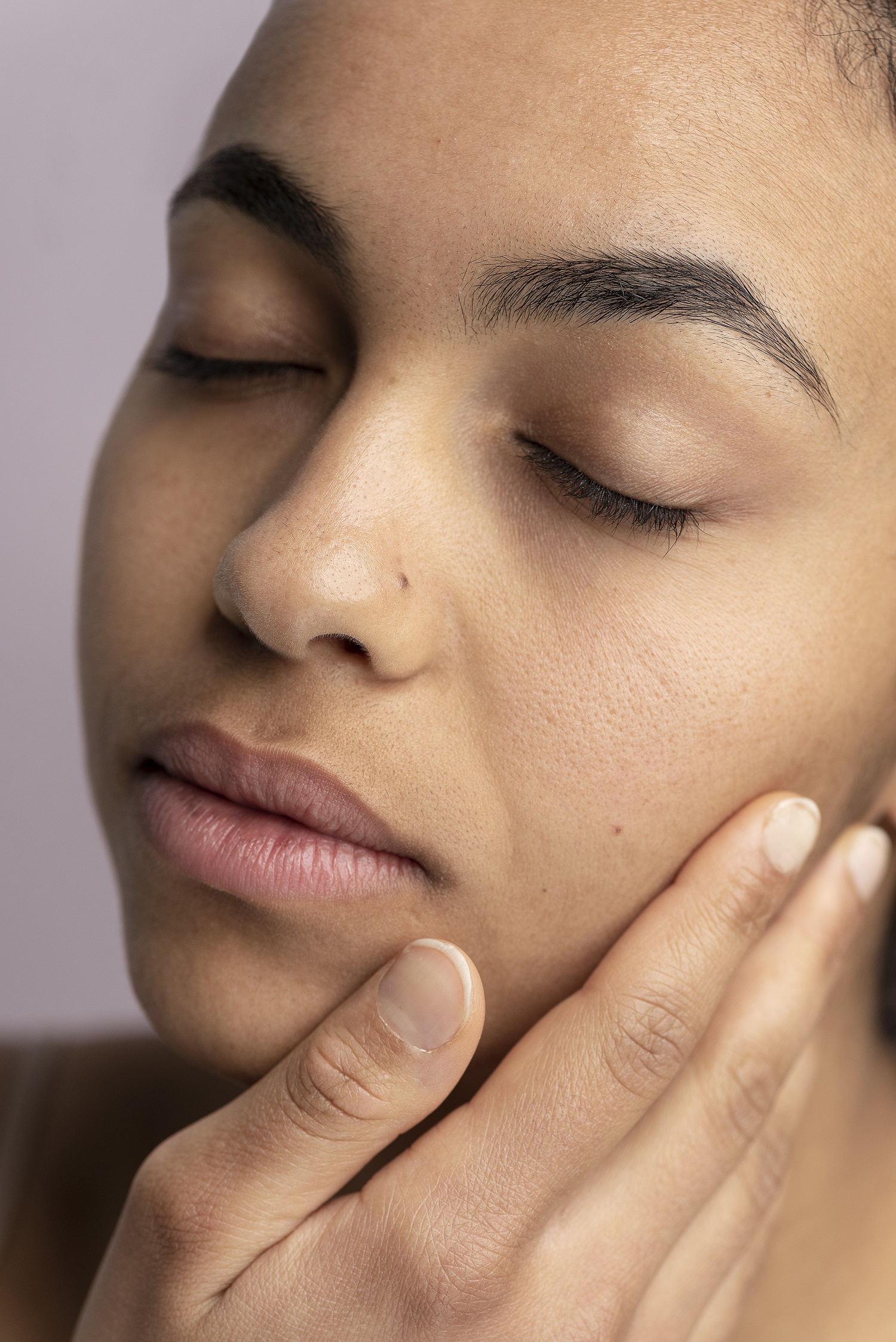
Dull and lacklustre appearance: Dry skin often lacks healthy skin’s natural glow and radiance. Instead, it can look sluggish and tired.
Fine lines and wrinkles: Dry skin is more prone to signs of premature aging, such as fine lines and wrinkles. The skin lacks the hydration and natural oils needed to maintain its elasticity.
Sensitivity: Dry skin is often sensitive and can react to harsh skincare products or environmental factors, leading to redness or discomfort.
Smaller pores: Unlike oily skin, dry skin has minor and less visible pores because it produces less sebum (natural oil).
Cracking or peeling: In severe cases, dry skin may crack or peel, especially in areas prone to dryness, such as elbows, knees, and heels.
Lack of shine: Dry skin usually does not have a greasy or shiny appearance. Instead, it looks matte and lacks natural shine.
Overall dryness: Dry skin can affect your entire face and body, not just specific areas. You may notice dryness on your arms, legs, and torso.
Besides, dry skin can be identified through some other methods.
Wash Your Face: Clean your face with a unique soap-free cleanser. This cleanser is similar to a gentle soap that won’t dry your skin.
Wait for an Hour: After washing your face, wait about an hour. This gives your skin time to return to its natural state.
Use Tissue Paper: Get tissue paper, like what you use to wipe your nose.
Touch Your Face: Gently touch the tissue paper to two parts of your face. First, connect it to your forehead, nose, and chin (called the T-zone). Then, touch it to your cheeks (that’s the C-zone).
Check the Tissue Paper: Look closely at the tissue paper after you touch it to your face.
Dry Skin: If the tissue paper doesn’t get oily on your T-zone and your skin feels stretchy, then your skin is dry. Dry skin can feel tight or like it needs some moisture.
If you have dry skin, the T-zone tissue isn’t oily, and your skin feels stretchy. Maintaining dry skin is essential to keep it healthy and comfortable.
If you suspect your skin is dry, adopting a skincare routine focusing on hydration and moisture retention is essential. These include using gentle cleansers and moisturizers with hydrating ingredients like hyaluronic acid and avoiding harsh skincare products or hot water that can further dry your skin. Drinking plenty of water, maintaining a healthy diet, and using a humidifier in dry indoor environments can also help improve dry skin.
Combination Skin
A mixture of oily and dry patches
Generally, the forehead, nose, and chin may be oily, while the cheeks are dry.
In identifying combination skin, it is essential to locate skin exhibiting oily and dry skin characteristics in different face areas. Combination skin can be tricky to manage, as you must address other areas’ needs separately.
Here’s how you can recognize combination skin:
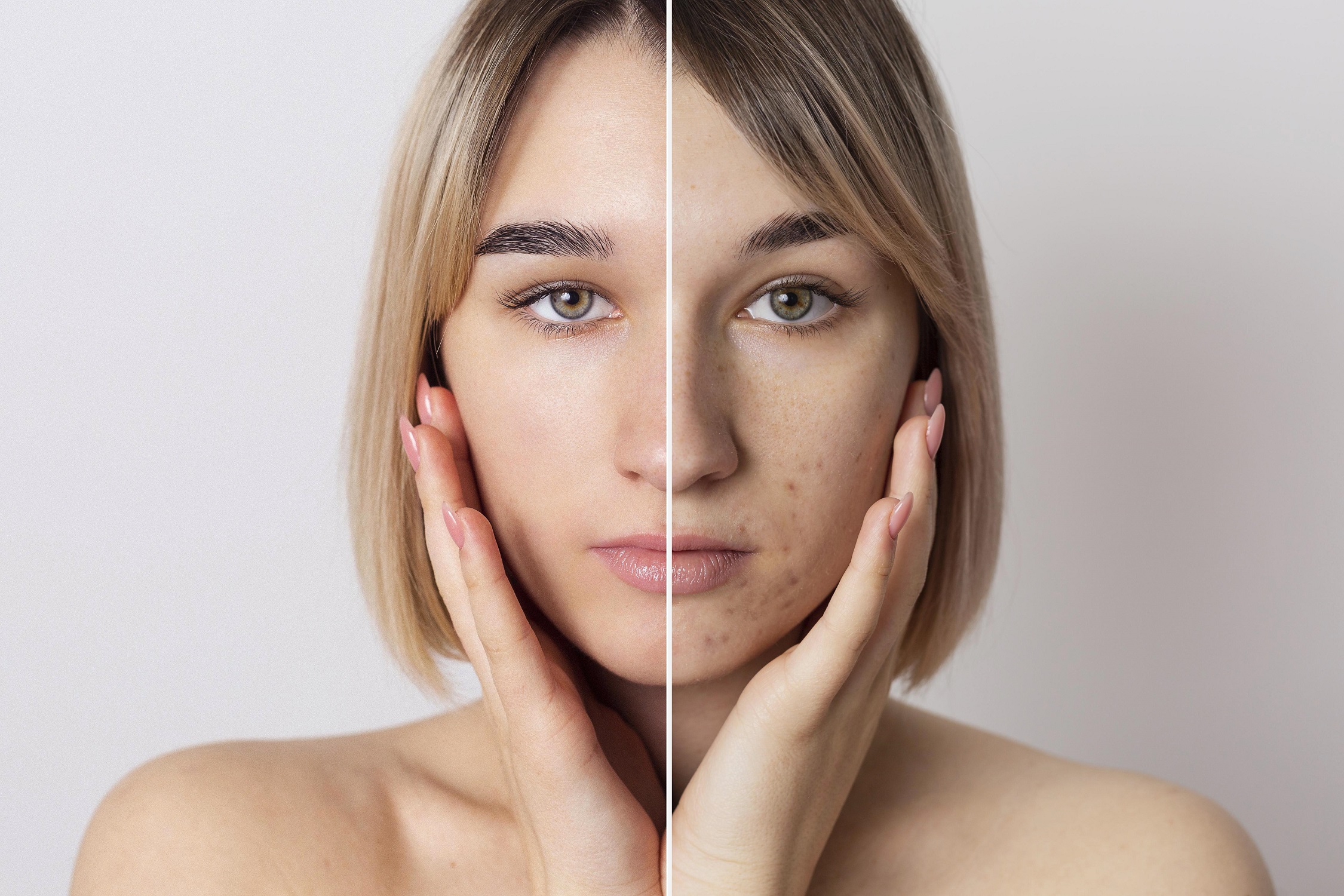
Wash Your Face: Clean your face with a unique soap-free cleanser. It’s like using soap, but it’s gentle and won’t dry your skin.
Wait for an Hour: After washing your face, wait about an hour. This helps your skin go back to its natural state.
Use Tissue Paper: Take a piece of tissue paper, like the kind you use to wipe your nose.
Touch Your Face: Gently touch the tissue paper to two parts of your face. First, connect it to your forehead, nose, and chin (called the T-zone). Then, touch it to your cheeks (that’s the C-zone).
Check the Tissue Paper: Look closely at the tissue paper after you touch it to your face.
Combination Skin: If the tissue paper is oily on the T-zone but dry on the C-zone, you have combination skin. It’s like having two different skin types on your face—one that’s a bit oily and another that’s dry.
if the T-zone tissue is oily and the C-zone tissue is dry, you have combination skin. It’s normal, and you can take care of both parts of your face uniquely to keep it healthy.
T-Zone Oiliness: The most common symptom of combination skin is oiliness in the T-Zone, which includes the forehead, nose, and chin. Shininess tends to occur in these areas, and the pores may enlarge.
Dry or Normal Cheeks: Unlike an oily T-zone, cheeks may feel normal or dry. They may be prone to dryness, flakiness, or tightness.
Acne and Blackheads: Combination skin often experiences breakouts and blackheads in oily areas, such as the nose and chin, due to excess sebum production.
Enlarged pores: You may notice larger and more visible pores in the T-zone, while pores are smaller on the cheeks and other drier areas.
Uneven texture: Combination skin can have a bumpy surface, with the T-zone feeling smoother and oilier than the dry cheek area.
Makeup challenge: Makeup may come off more quickly on an oily T-zone while adhering better to a dry cheek area.
Seasonal Variations: Some people with combination skin find that their skin’s behavior changes with the seasons. For example, the T-zone can become oily in summer and dry in winter.
Occasional sensitivity: Some people with combination skin may experience rare sensitivity or redness, especially in dry or normal areas.
The first step in creating an effective skincare routine is recognizing combination skin. Here are a few ways to oversee combination skin:
Use a gentle cleanser: Use a mild, sulfate-free cleanser to avoid over-drying dry areas while effectively removing excess oil from the T-zone.
Balanced moisturizing: Apply a lightweight, non-comedogenic moisturizer to dry areas while using a mattifying or oil-free moisturizer on the T-zone.
Targeted treatments: Use spot treatments or serums for specific skin concerns. Apply acne treatments to oily and hydrating or soothing products to dry areas.
Sun protection: Regardless of your skin type, always use broad-spectrum sunscreen with at least SPF 30 to protect your skin from UV damage.
Adjust your routine: Be flexible with your skincare routine and adapt it to your skin’s changing needs, especially during different seasons.
Patch Testing: When introducing new products, patch test them to ensure they don’t increase oiliness or dryness.
Consult a dermatologist: If you’re struggling to manage combination skin or have specific concerns, consult a dermatologist who can recommend appropriate products and treatments.
Balancing combination skin requires trial and error to find the right products and routines that work for you. Pay attention to how your skin responds and adjust your skincare accordingly to keep both oily and dry areas healthy and balanced.
Sensitive Skin
A tendency to have reactions such as redness, itching, or burning
Adverse reactions to some skincare or cosmetic products may occur
Recognizing sensitive skin involves being aware of certain signs and symptoms that indicate your skin is prone to sensitivity or reacts quickly to various environmental factors and skin care products. Sensitive skin can manifest differently in individuals, but here are general indicators to help you identify it:
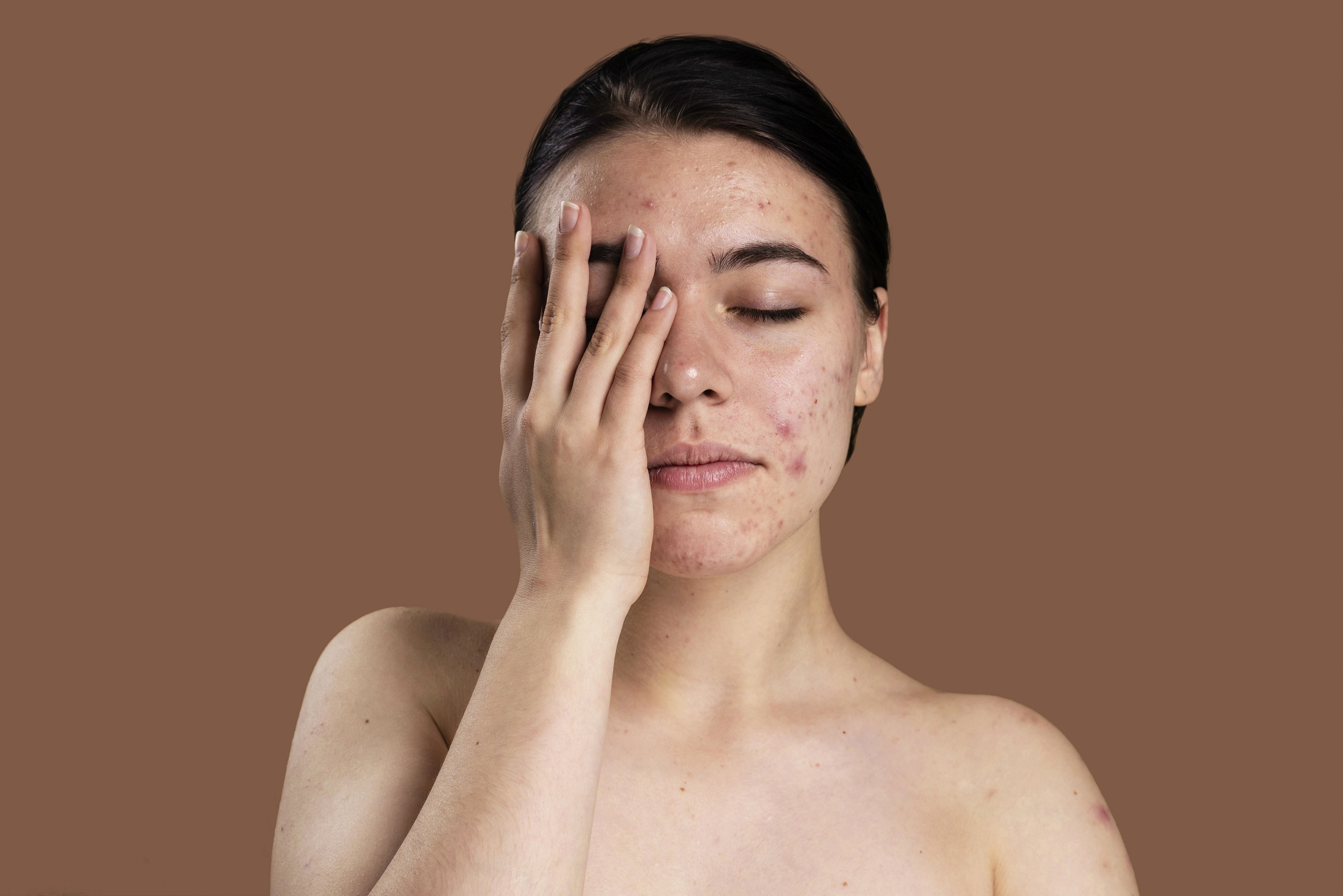
Redness: Persistent or frequent redness, especially in response to skin care products or environmental triggers, is a characteristic symptom of sensitive skin.
Irritation: Sensitive skin often experiences anger, manifesting as a burning, stinging, tingling, or uncomfortable sensation.
Itching: Skin that becomes itchy immediately or over time can show sensitivity.
Dryness: Sensitive skin tends to be dry and may feel tight, flaky, or rough.
Tightness: “A tight feeling can indicate skin sensitivity, especially after cleansing or using certain products.”
Allergy prone: Sensitive skin is more susceptible to allergic reactions and may develop rashes, hives, or bumps when exposed to allergens or irritants.
Breakouts: Sensitive skin can be prone to breakouts or acne-like eruptions when it reacts to certain ingredients in skincare or makeup products.
Swelling: Skin sensitivity can cause localized swelling, especially in response to allergens or irritants.
Sun sensitivity: People with sensitive skin are more susceptible to sunlight and may be prone to sunburn, even with minimal sun exposure.
Environmental triggers: Sensitive skin may react to environmental factors such as wind, cold weather, heat, or pollution, causing discomfort or redness.
Product sensitivities: Sensitive skin often reacts to skincare products that contain harsh ingredients, fragrances, dyes, or preservatives.
Increased sensitivities over time: If your skin becomes more sensitive, with previously tolerated products irritating, this may indicate a developing sensitivity.
It is important to note that sensitive skin can have different triggers; therefore, one person’s sensitivity may not affect another in the same way. To manage sensitive skin and reduce discomfort:
Choose gentle products: Skincare products for sensitive skin are usually fragrance-free, hypoallergenic, and irritation-free.
Patch test: When trying new products, do a patch test by applying a small amount to a small area of your skin (e.g., the inside of your wrist) to check for adverse reactions.
Avoid Harsh Ingredients: Stay away from skincare products that contain alcohol, harsh exfoliants, strong fragrances, or ingredients known to be irritating.
Sun protection: Use sunscreen daily, as sensitive skin is more susceptible to sun damage and sunburn.
Please keep it simple: A minimal skincare routine with fewer products can help reduce the risk of irritation.
Consult a dermatologist: If you have persistent or severe skin sensitivity, consider consulting a dermatologist for a professional evaluation and personalized recommendations.
Remember that sensitive skin can require extra care and attention, so it’s essential to tailor your skincare routine to your specific needs and pay close attention to how your skin reacts to different products and environmental factors.

